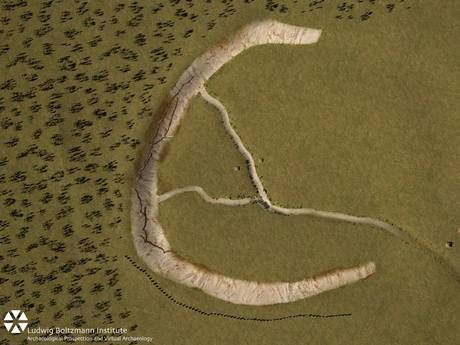
Experts have discovered an ‘extraordinary’ line of giant stones that date back more than 4,500 years.
Archaeologists believe that the Stone monoliths found buried not far from Stonehenge could have been part of the largest neolithic monument built in Britain.
Unlike Stonehenge, the newly discovered formation of stones is organised along one straight line

BYPASS THE CENSORS
Sign up to get unfiltered news delivered straight to your inbox.
You can unsubscribe any time. By subscribing you agree to our Terms of Use
The huge stones, some measuring 15ft (4.5m) in length, were found under 3ft of earth at Durrington Walls “superhenge”.
Researchers said that the monument was on “an extraordinary scale” and unique.

The Mail Online reports:
The area around Stonehenge is littered with prehistoric sights but the 90 or more stones, lying 3ft underground, have only just been discovered by sophisticated radar equipment towed by quadbikes.
The buried monoliths are each up to 15ft tall. Instead of being arranged in a circle as they are at Stonehenge, it is thought they once formed a long standing line.
‘We’re looking at one of the largest stone monuments in Europe and it has been under our noses for something like 4,000 years,’ said Professor Vince Gaffney, from the University of Bradford, one of the archaeologists leading the research. ‘It’s truly remarkable.
‘We don’t think there’s anything quite like this anywhere else in the world. This is completely new and the scale is extraordinary.
‘We presume it to be a ritual arena of some sort. These things are theatrical… designed to impress.’
The stones were placed along the south-eastern edge of what later became the Durrington Walls ‘superhenge’ – a circular settlement ringed by a ditch and bank that, at a third of a mile across, is the largest earthwork of its kind in the UK.
Who toppled them and whether the arena was a rival attraction to Stonehenge or part of the same complex of sacred sites is unknown. They may even have been pushed over to protect their sacred significance, Professor Gaffney said.
The stones, which have not yet been excavated, are thought to be ‘sarsens’ – giant sandstone blocks like those used at Stonehenge.
The discovery was unveiled at the British Science Festival at the University of Bradford.
At the same event last year, the Hidden Landscapes study revealed a host of archaeological features around Stonehenge.
Dr Nick Snashall, National Trust archaeologist for Stonehenge, said: ‘The Stonehenge landscape has been studied for centuries.
‘But the work of the Hidden Landscapes team is revealing previously unsuspected twists in its age-old tale.’
The discovery at Durrington Walls was unveiled at the British Science Festival, taking place this week at the University of Bradford.
At the same event last year, the international team revealed a host of previously unknown archaeological features that had been hidden in the landscape around Stonehenge.
They included a 108ft long burial mound containing a massive wooden building whose timber foundations lay under the soil.
Prof Gaffney believes the stones may have been planted by the same people who built Stonehenge, but is sceptical about a direct link between the two monuments.
They were placed along a steep slope, or scarp, cut into a natural dry valley to form a C-shaped feature.
Precisely why the stones were put there remains a mystery.
Part of Durrington Walls is aligned with the rising sun on the winter solstice, the shortest day of the year, which may be significant.
The archaeologists believe that at some stage the stones were pushed over and incorporated into the emerging henge.
This was not an act of vandalism but a deliberate attempt to preserve whatever it was about the stones that seemed so important.
‘There was a transformation in the landscape that we do not understand,’ Prof Gaffney said.
‘The stones had significance.
The discovery was announced at the opening of the British Science Festival in Bradford, and has been described as the most exciting finding of Neolithic Britain for many years.


Be the first to comment